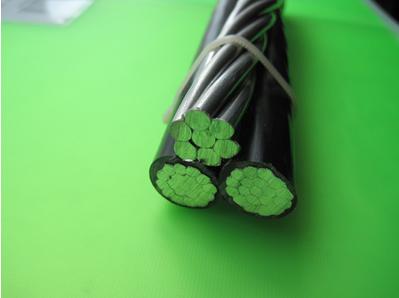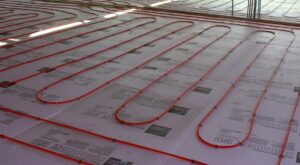Cross-linked polyethylene insulated cable boasts a number of benefits over other type of wire and cable install choices. And that’s probably why so many different industries take advance of the unique cable properties. See below for some of the more population applications.
Plumbing
The most popular industry that utilizes cross-linked polyethylene is plumbing. Prior to PEX tubing and piping, copper was the go-to choice. While that is still a serviceable option, PEX has become more and more popular due to its flexibility during installation. It also resists corrosion and performs well under a wide range of temperatures, allowing it to transport heated water as well as cold water. Many plumbing systems color code the tubing – red for hot water and blue for cold – to easily differentiate the two. Oh, the fact that it costs up to 10 times less than copper factors into the decision, too!
Mining
PEX piping is increasing in prevalence in the mining industry. An incredible amount of time and money is spent on installing, repairing and maintaining piping in mines. PEX, due to its easy installation characteristics, reduces both of those factors. Because it can withstand extreme pressure and temperatures, cross-linked polyethylene piping efficiently performs in mines.
Electrical Cable
High voltage cables need to transfer various amounts of energy both underground and above ground. This constant flow of energy in all sorts of directions calls for a resistance of shocking, sparking or anything else that would cause a fire or other potential harm.

XLPE (the acronym used to describe cross-linked polyethylene when it comes to cabling) tubing serves as a perfect insulator for these cables. The insulation is resistant to weather, heat and moisture – giving the copper wires protection in order to transfer energy efficiently and safely. Performance Wire and Cable offers three XLPE cables. RHW-2, USE-2 and RHH cables are bare copper with cross-linked polyethylene (XLPE) insulation, suitable for many cable systems.
Chemical Industry
XLPE storage tanks hold all kinds of different chemicals. The ability to withstand acidic corrosion and heat make it a perfect choice for these chemical storage tanks. It also decreases the chance of stress cracks in the lining, which leads to tank failure.
Linear polyethylene tanks are also substantial, but it’s the cross-linking process that sets XLPE apart from linear tanks. Unlike the plumbing industry, cross-linked polyethylene costs more up front than its competitors. However, the final product lasts longer due to the strength and durability that the cross linking yields. This saves money over the long run due to less maintenance, repair and replacement costs.
Radiant Heating
PEX tubing is a solid choice for radiant floor heating in residential housings. This heating system varies from traditional heating options by heating the floors and any objects touching the floor. Radiant heating provides a more even, consistent heat to a room.

In simple terms, PEX tubing transports heated water to a specific area to provide heat. Cross-linked polyethylene’s resistance to heat and ability to be shaped and directed in various directions make it ideal for radiant heating.
Outside of Wires and Cables
Apart from the applications above, PEX/XLPE has also seen use in:
- The medical field
- Dental industry
- Groundskeeping for turf temperatures
- Canoes, kayaks and other watercraft products
Cross-linked polyethylene has been used since the 1930s. As technology continues to improve and more research comes out, expect PEX tubing to appear more and more across a wider range of industries, offering its many benefits.
Have any questions about PEX or XLPE? Need to get in touch about our cable offerings?
